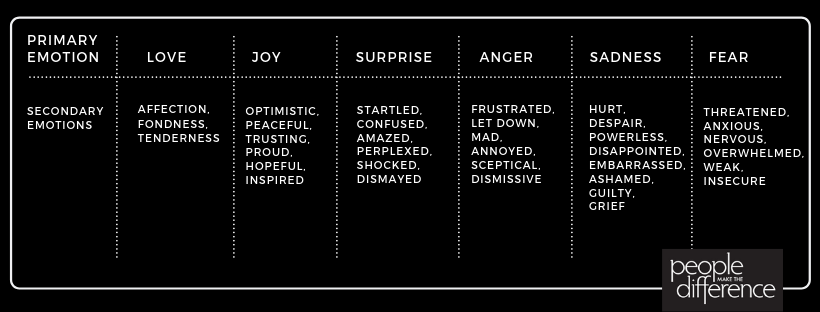Keep calm and lead on
Challenges and obstacles are a fact of life – we’re all human and as a result we have human, emotional reactions to the things we come up against. So how are leaders supposed to respond when things don’t go as planned?
Developing the emotional range
Emotional ranges are often compared to pianos. If someone who is not adept at the instrument were to be asked to play, they might start by hitting one of the ivory keys — A B C D E F or G. Similarly, most of us, if we were put on the spot and asked how we felt at any particular moment, would respond with one of the six primary emotions — love, joy, surprise, anger, sadness or fear.
Just like a young musician who practises to become a great piano player, using all of the keys, adding flats, sharps and introducing the use of the pedals, great leaders build on their emotional range and exercise this range frequently. The primary emotions are still important but secondary emotions are often more accurate to how someone is really feeling.

Not everything always goes to plan. Often, leaders can react one of two ways:
It’s easy to show frustration, to lose your head, when things start to go wrong. Showing too much emotion is a sign of a leader who is yet to learn to restrain their emotions and, besides it being disconcerting for a team to see their leader crumble under pressure, it can also be embarrassing for a leader to look back on their emotional display in hindsight.
Then again, some leaders take it to the other extreme. Taking a leaf out of the British government’s book in WWII, they try to ‘keep calm and carry on’, refusing to let any emotion through.
Neither approach is all that helpful for a team.
Modelling emotional intelligence
Emotions allow people to connect with each other. Being void of all emotion as a leader is unrealistic and a less-than-helpful example for your team. Your team should feel emotionally safe in the team environment; they should feel comfortable to celebrate their wins, feel frustrated or upset when things go wrong and to express those feelings appropriately. If they don’t see their leader modelling any emotion at all, they are likely to repress their own.
On the other end of the spectrum, leaders don’t want their team crumbling at the first sign of adversity or losing their cool when things get frustrating. Just like the musician uses the pedal to create soft and loud sounds with the piano, leaders should be learning how to use their emotions in different ways. Angry with the loud pedal might be akin to aggressive hostility, while an angry leader with the soft pedal on might be disappointed or let down — the two are very different and the difference should be learnt by all leaders.
There are times when keeping a cool, perhaps even detached, head can be beneficial but it is important that your team sees you modelling honest, appropriate emotional responses, in all situations.
Are you ready to develop your emotional intelligence? People Make the Difference can help. To find out more, visit www.pmtd.com.au or call us on 0412 333 415. Try our online leadership training videos – $99 for complete access. Great value if you’re committed to growing your leadership potential.


